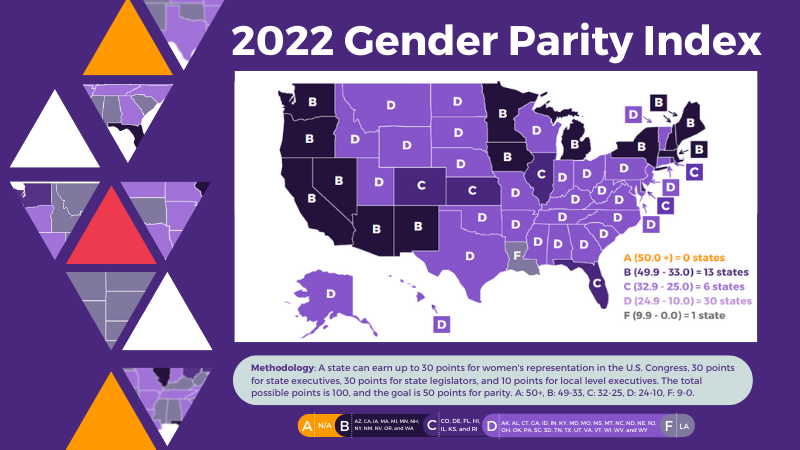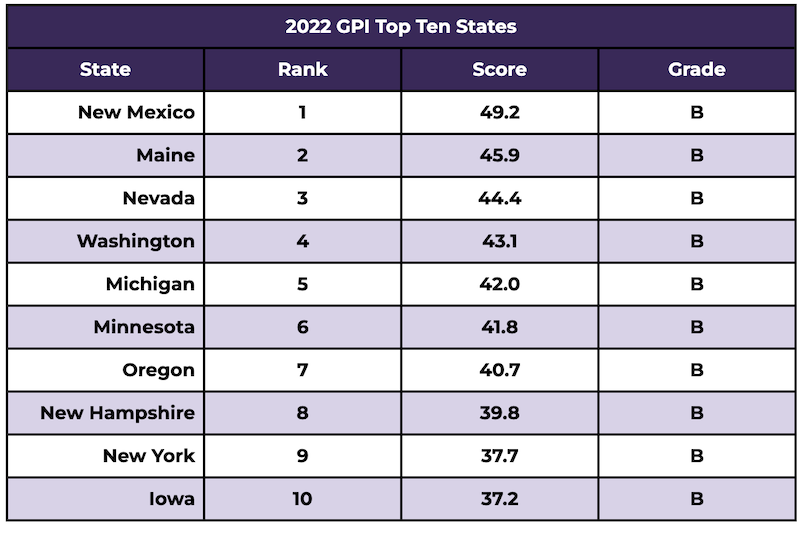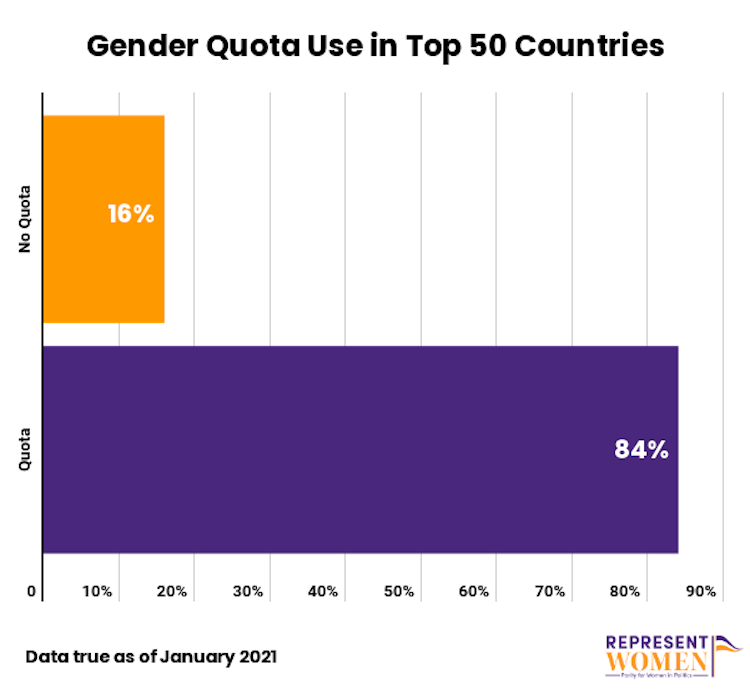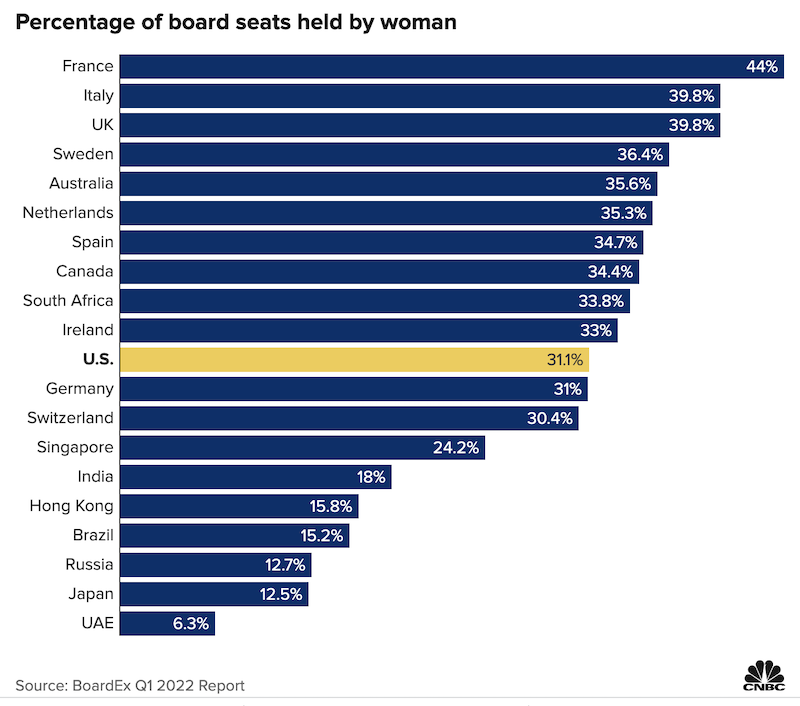Women's Rights & Issues
Related: About this forumThe Best and Worst States for Gender Parity--and What Works to Increase It
The Best and Worst States for Gender Parity—and What Works to Increase It
7/29/2022 by Cynthia Richie Terrell

Many thanks to RepresentWomen research director Courtney Lamendola who worked with her terrific team to release the 2022 Gender Parity Index this week. While women’s representation has increased since last year’s report, most states still get a “D”—no state gets an “A”—and the current pace of progress is too slow to reach gender balance in politics in our lifetimes:
Nine years ago, RepresentWomen (then Representation2020) developed the Gender Parity Index (GPI) to help researchers and advocates rate progress towards gender-balanced governance in the United States. Each year, a Gender Parity Score is calculated for each of the 50 states and the U.S. as a whole. This score measures women’s representation at the national, state, and local levels of government on a scale of 0 (if there are no women in office) to 100 (if there are women in every office). Grades are then assigned according to a state’s proximity to parity (50/100).

The Gender Parity Index is a measurement and evaluation tool that enables us to track outcomes for women in politics and make comparisons between states. One of the key takeaways from this exercise is that progress towards gender-balance is slower than it appears. Though it is true that women’s representation has increased over time, the Gender Parity Index shows that 1) not every state is on an upward trajectory towards parity, and 2) women remain underrepresented at every level of government, despite record progress.

At RepresentWomen, we use the Gender Parity Index to demonstrate the need for systems strategies that can improve women’s representation in politics. Our research shows that there are systemic barriers that make it more difficult for women to enter politics and limit progress towards parity in every state. Existing strategies that focus on preparing individual women to run for office are not enough to mitigate these barriers on their own. Complementary systems strategies are needed to address the systemic barriers that hinder women at every stage of the electoral process.

‘Women in the C-Suite Is Key to Having More Women Ascend to the CEO Ranks’

If you want to take a good guess at a company’s gender diversity record, you might want to first look at who its CEO or board chair is, according to the findings of a new study. Having a female CEO at the helm of a company or chairing its board tends to make a huge difference, Altrata’s latest Global Gender Diversity report said Thursday. The report examined BoardEx data to study female representation on the boards and leadership teams of 1,677 publicly traded companies in 20 countries as of the first quarter of this year. It found that female representation on boards and in executive suites remains woefully low. And women who occupy roles on corporate boards often do not hold the most powerful positions…. But having a woman at the top can ripple throughout the organization. Of the companies studied, U.S.-listed Organon had the highest proportion of female board members, while Singapore-based CapitaLand Integrated Commercial Trust tops the global list for corporate leadership.
https://msmagazine.com/2022/07/29/states-gender-parity-women-politics-representation-quota/